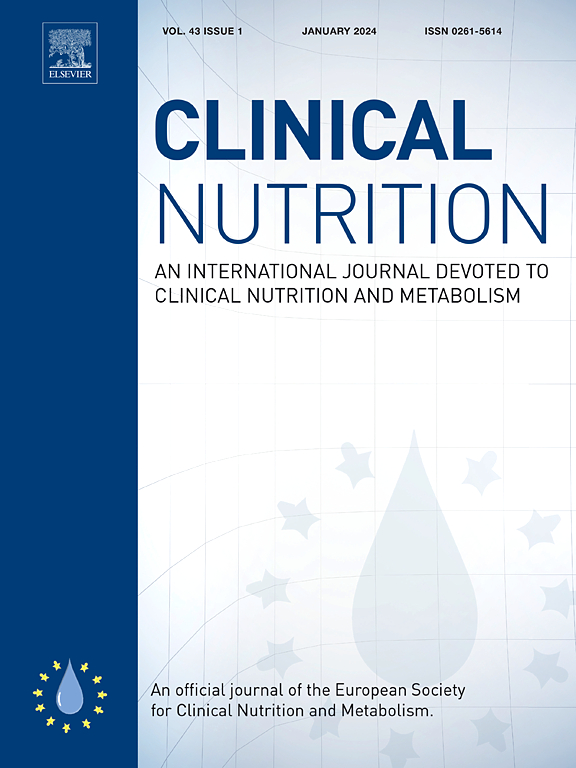Brown adipose tissue is associated with reduced weight loss and risk of cancer cachexia: A retrospective cohort study
IF 6.6
2区 医学
Q1 NUTRITION & DIETETICS
引用次数: 0
Abstract
Background & aims
Brown adipose tissue (BAT) has been mainly investigated as a potential target against cardiometabolic disease, but it has also been linked to cancer-related outcomes. Although preclinical data support that BAT and the thermogenic adipocytes in white adipose tissue may play an adverse role in the pathogenesis of cancer cachexia, results from studies in patients have reported inconsistent results. The purpose of this study was to examine the interrelationship between presence of detectable BAT, changes in body weight, and cachexia in patients with cancer. We hypothesized that evidence of BAT at cancer diagnosis would be associated with greater weight loss and risk of cancer cachexia up to a year after cancer diagnosis.
Methods
We conducted a retrospective cohort study in treatment-naïve patients with detectable BAT (BAT+, n = 57) and without evidence of BAT (BAT-, n = 73) on 2-deoxy-2-[18F]fluoro-d-glucose positron emission tomography-computed tomography (18F-FDG-PET-CT) imaging performed for cancer staging (2004–2020). Patients’ clinical, demographic, and anthropometric characteristics were extracted from their electronic medical record for up to a year after diagnosis. The two groups were a priori matched for demographic, anthropometric, and disease-related characteristics at diagnosis, as well as for season and outdoor temperature on the day of the PET-CT scan. Cancer cachexia was defined as weight loss greater than 5 % or 2 % if body mass index was lower than 20 kg/m2. Poisson regression models were fitted to estimate the relative risk (RR) for developing cancer cachexia over the 1-year follow-up among BAT+ compared to BAT- patients.
Results
The BAT+ group experienced a lower magnitude of weight loss compared with the BAT- group during the 1-year follow-up (p = 0.014 for interaction between BAT status and time). The risk for cancer cachexia was 44 % lower in the BAT+ than the BAT- group, adjusted for age, sex, outdoor temperature on the day of the 18F-FDG-PET-CT imaging, cancer site and stage (RR: 0.56, 95 % CI: 0.32 to 0.97).
Conclusion
Contrary to our original hypothesis, evidence of BAT assessed by 18F-FDG-PET-CT imaging at cancer diagnosis was associated with greater body weight maintenance and lower risk for developing cancer cachexia up to one year after diagnosis. Larger, prospective studies and mechanistic experiments are needed to expand and identify the causal factors of our observations.
求助全文
约1分钟内获得全文
求助全文
来源期刊

Clinical nutrition
医学-营养学
CiteScore
14.10
自引率
6.30%
发文量
356
审稿时长
28 days
期刊介绍:
Clinical Nutrition, the official journal of ESPEN, The European Society for Clinical Nutrition and Metabolism, is an international journal providing essential scientific information on nutritional and metabolic care and the relationship between nutrition and disease both in the setting of basic science and clinical practice. Published bi-monthly, each issue combines original articles and reviews providing an invaluable reference for any specialist concerned with these fields.
 求助内容:
求助内容: 应助结果提醒方式:
应助结果提醒方式:


